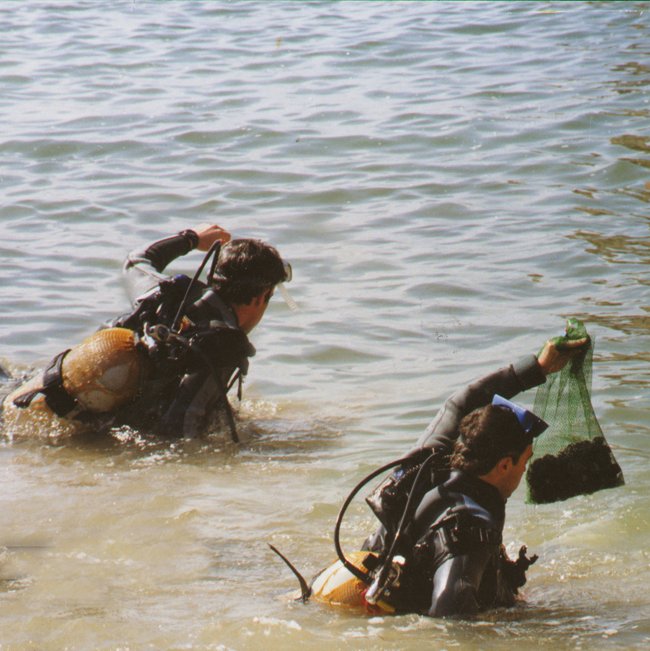"Leibush," I turned to my office mate one day and said, "I think the crucial difference between the ways we view our religious imperative boils down to this: You believe that the only thing that is important in the whole world is to serve God, while I believe that what is important is to use the whole world in the service of God."
This was 20 years ago, and I had just finished my "4-2" joint program at Yeshiva University and Columbia, graduating with a B.S. in Physics and a Masters in Electrical Engineering. Next was a job at the very hub of technological innovation, Bell Labs. I was excited to be entering the real world, having spent my life so far in something of a cocoon where almost all of my friends were Jewish. Ironically, my office mate turned out to be an ultra-orthodox Bobover Hasid. Leibush had little formal secular education, but was a self-taught (and brilliant) computer programmer who introduced me to the secrets of Unix and the art of coding in the software language of "C." We became good friends and spent many a lunch hour in deep conversation, discussing our respective outlooks on life and religion, his insular and exclusive, mine more open and accepting.
"Take scuba diving for example," I continued. The PADI certification card for the scuba course I had taken as my college gym requirement had just arrived in the mail. "I believe that exploring the gorgeous, fascinating world beneath the sea and marveling at the incredible variety of life can be a spiritual, religiously significant experience." Leibush sat back, amused, "I hardly believe that one can serve God through scuba diving," he laughed.
But he was wrong. Ten years later, in Israel, I received a phone call from an old high school friend. He had just met a young rabbi who believed that he had found the source of the ancient biblical blue dye, tekhelet. The nature of the elusive sea creature that produced this precious commodity, and the secrets of the dye process itself, had been lost to the world for over 1300 years. Jews are commanded to wear a thread of tekhelet on their garments but this essential mitzvah had fallen into disuse when all knowledge relating to tekhelet was forgotten. The pioneering rabbi, determined to produce the genuine blue dye once again, was looking for scuba divers to help him collect the snails he believed were the authentic source of the dye. Diving for the sea-snails that day began as a curiosity that later turned into a passion, then an obsession, and finally to a lifelong endeavor involving cofounding an organization to mass produce tekhelet strings. Today, hundreds of thousands of Jews around the world are once again able to wear tzitzit with a thread of blue as prescribed in the Bible.
I hadn't thought much about Leibush and our conversation back at Bell Labs until this past weekend. My wife and I were invited to Champions Gate, Florida, to join over 400 students, alumni, and supporters of Yeshiva University at a retreat to explore the values and mission of the modern Orthodox Jewish community. It was an amazing event -- impressive, inspiring, educational, and a wonderful opportunity to meet and share thoughts with current and future community leaders from around the United States and the world.
Modern Orthodoxy is a complex religious philosophy. It sets a high value on traditional Torah imperatives while at the same time embracing modern science, technology, and secular thought. My wife and I have chosen to make our life in Israel and to raise our family in the convergent setting of a Jewish, modern, democratic society, where I work as a high-tech entrepreneur and attend Torah lectures daily. Conversations in the family flow seamlessly from software development to Talmudic discussions, to history, literature, Bible, and politics. That's not to say that maintaining such an inclusive attitude is easy. A nuanced ideology, where issues take on a range of colors and are seldom seen as black and white, requires that topics be considered from divergent viewpoints reflecting various attitudes and perspectives. Such an approach is likely at times to create intellectual tensions, conflicts that cannot be resolved satisfactorily by unconditional and monolithic solutions. Often, however, different fields of endeavor, and diverse concepts, can co-exist in easy harmony.
Scuba diving for tekhelet is not just a fortuitous metaphor from a long-ago conversation between office mates, but rather is a prototypical instance of the fruitful integration of disparate areas of experience. At the Champions Gate retreat, we met with teachers, principals, and curriculum experts to develop methods of using the modern rediscovery of tekhelet as the quintessential example of the importance of combining Torah and secular studies. By highlighting the multi-disciplinary nature of the fascinating story behind the blue dye, where religion, history, chemistry, marine biology, art, and more intersect with each other, we hope to show that each piece of the puzzle makes a contribution that is crucial to an appreciation of the picture as a whole.
I still believe as I did so many years ago that it is a religious imperative to explore, appreciate, and enrich the world. These are the beliefs by which I try to live my life and that I strive to pass on to my children. As Galileo, a great hero of mine, explained, God has written two books, the Bible and the Universe. To truly serve Him, one must be deeply versed in both. A man can never, said Francis Bacon, "search too far, or be too well studied in the book of God's word, or the book of God's works."
